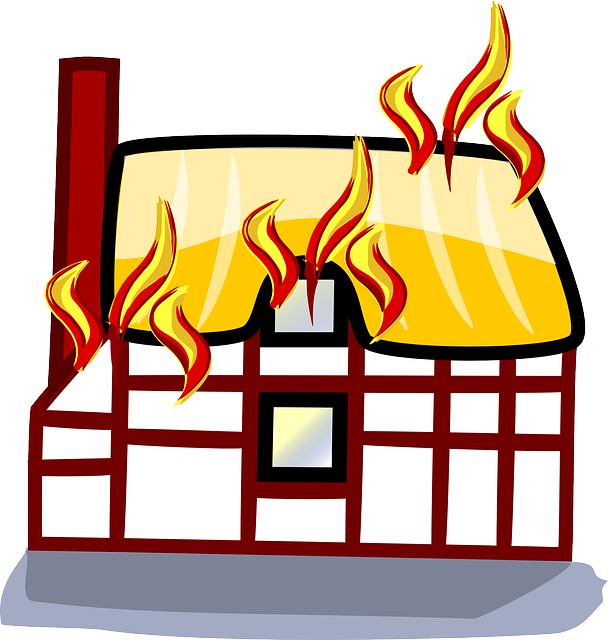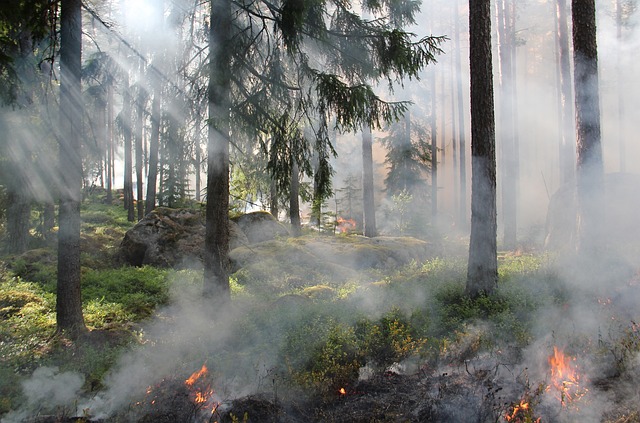Selling a fire-damaged home in California presents unique challenges due to climate, wildland fires, and legal complexities. To succeed, sellers must accurately assess repair costs with specialized help, disclose damage transparently, and prioritize safety and code compliance. Buyers should inspect properties thoroughly, negotiating fairly based on disclosed damage. Collaborating with real estate professionals specializing in distressed sales enhances marketing and attracts investors. The closing process requires comprehensive inspections, informed negotiations, and timely communication to build trust. Focusing SEO keywords "how to sell a fire damaged home California" aids in reaching prospective buyers seeking guidance.
In the wake of natural disasters, many Californians face the daunting task of selling their distressed properties. This comprehensive guide navigates the complex landscape of fire-damaged home sales in California. From understanding market dynamics and legal intricacies to preparing your home for sale and effective marketing strategies, we provide actionable insights. Learn how to turn challenges into opportunities, ensuring a smooth closing process. Discover expert tips tailored to the unique considerations of selling a fire-damaged residence in the Golden State.
- Understanding Distressed Property Sales: A California Focus
- The Impact of Fire Damage on Home Value
- Legal Considerations for Selling a Fire-Damaged Property
- Preparing Your Home for Sale After a Fire
- Marketing Strategies for Attracting Buyers
- Navigating the Closing Process: Tips and Best Practices
Understanding Distressed Property Sales: A California Focus

Distressed property sales, particularly in California, refer to the process of selling homes or properties that have sustained damage or are in disrepair. This can include fire-damaged homes, where a natural disaster or accidental fire has left its mark on the structure. Understanding this unique market is crucial for both sellers and buyers in the Golden State. California’s real estate landscape offers specific challenges due to its diverse climate and frequent wildland fires.
When it comes to how to sell a fire-damaged home in California, there are several steps involved. Sellers must first assess the extent of the damage, obtaining accurate estimates for repairs. This process can be complex, as it requires specialized knowledge and professionals to accurately value the property post-damage. Once repairs are planned or underway, potential buyers can inspect the property, ensuring transparency about the fire’s impact. With proper disclosure and remediation, distressed sales provide an opportunity for both parties to navigate this unique market, allowing homeowners to recover financially from their loss while offering buyers a potentially valuable investment with careful consideration.
The Impact of Fire Damage on Home Value

Fire damage can significantly impact the value of a property, especially in competitive markets like California, where real estate is highly sought-after. When a home experiences a fire, it leaves visible and sometimes invisible scars that potential buyers may find off-putting. The extent of the damage plays a crucial role; minor fire incidents might result in repairable cosmetic issues, but severe cases can lead to structural problems and health hazards.
In California, where home values are generally high, even perceived damage from a fire can reduce the property’s value considerably. This is because buyers often conduct thorough inspections and may be deterred by potential costs for repairs or renovations. However, there are strategies to navigate these challenges, such as working with experienced real estate agents who understand the local market, accurately disclosing all damages, and providing transparent information about the repair process.
Legal Considerations for Selling a Fire-Damaged Property

Selling a fire-damaged property in California involves navigating a series of legal considerations that go beyond the typical real estate transaction. First, it’s crucial to understand the local building and safety codes to assess whether the property can be repaired and brought up to code, or if it’s more economical to demolish it. In California, firefighters often conduct post-fire inspections to evaluate structural integrity and potential hazards, which can impact a property’s insurability and resale value.
Additionally, homeowners must comply with environmental regulations regarding asbestos removal, lead paint abatement, and other hazardous materials commonly found in older homes. These requirements can significantly increase costs but are legally mandated to protect future occupants. Furthermore, insurance companies may have specific guidelines for settling claims on fire-damaged properties, including appraisals and restoration estimates, which must be carefully documented to ensure fair compensation for the seller while adhering to legal frameworks.
Preparing Your Home for Sale After a Fire

After a fire, your primary concern should be ensuring everyone’s safety and securing immediate support from emergency services. Once the immediate danger has passed, the process of preparing your California home for sale begins. The first step is to assess the damage caused by the fire. Engage professional estimators or firefighters who can provide an accurate evaluation of the structural integrity and extent of the damage.
Documenting the repairs needed is crucial. Take detailed photos of the affected areas, and create a list of restoration tasks. This not only helps in communicating the scope of work to potential buyers but also ensures you have a clear plan for the renovation process. Repairs may include roof replacement, structural reinforcement, smoke and water damage cleanup, and updating electrical or plumbing systems. Prioritizing these repairs will enhance your home’s appeal and marketability while adhering to California’s building codes.
Marketing Strategies for Attracting Buyers

When it comes to selling a fire-damaged property in California, a well-crafted marketing strategy is key to attracting buyers who understand the potential for renovation and rebuilding. Beyond listing the physical repairs needed, highlight the unique opportunities and advantages that come with purchasing such a home. Emphasize location, neighboring properties, and local community resources to showcase the broader appeal beyond the immediate damage.
Use visual storytelling techniques, sharing before-and-after images or virtual tours that demonstrate both the extent of the fire damage and the vast possibilities for transformation. Collaborate closely with real estate professionals who specialize in distressed sales to ensure accurate property valuations and marketing materials that effectively communicate the value proposition to prospective buyers who are willing to see past the immediate challenges, focusing on the potential for a beautiful, new beginning.
Navigating the Closing Process: Tips and Best Practices

Navigating the closing process for a distressed property, like a fire-damaged home in California, requires careful preparation and knowledge of best practices. Start by thoroughly understanding the extent of damage through a thorough inspection; this will help determine potential costs for repairs and negotiations with buyers. Document all repairs made to ensure transparency throughout the sales process.
Engage experienced professionals—real estate agents familiar with distressed sales, lawyers, and contractors—to guide you through legalities and renovation specifics. Keep open communication with potential buyers, highlighting any improvements or safety measures taken. Be prepared for flexible negotiations, as buyers may have specific requirements due to the property’s unique circumstances. Timely responses to inquiries build trust, fostering a collaborative environment that can lead to a successful closing.
Selling a fire-damaged property in California can be a complex process, but with the right understanding and strategies, it’s feasible. By navigating legal considerations, preparing your home effectively, and employing tailored marketing approaches, you can successfully attract buyers interested in purchasing distressed properties. Remember, each step of the closing process requires careful attention to detail and adherence to best practices to ensure a smooth transaction. Armed with knowledge and the right tools, selling a fire-damaged home in California becomes more than just a possibility—it’s a viable path to rebuilding and revitalizing your property.






